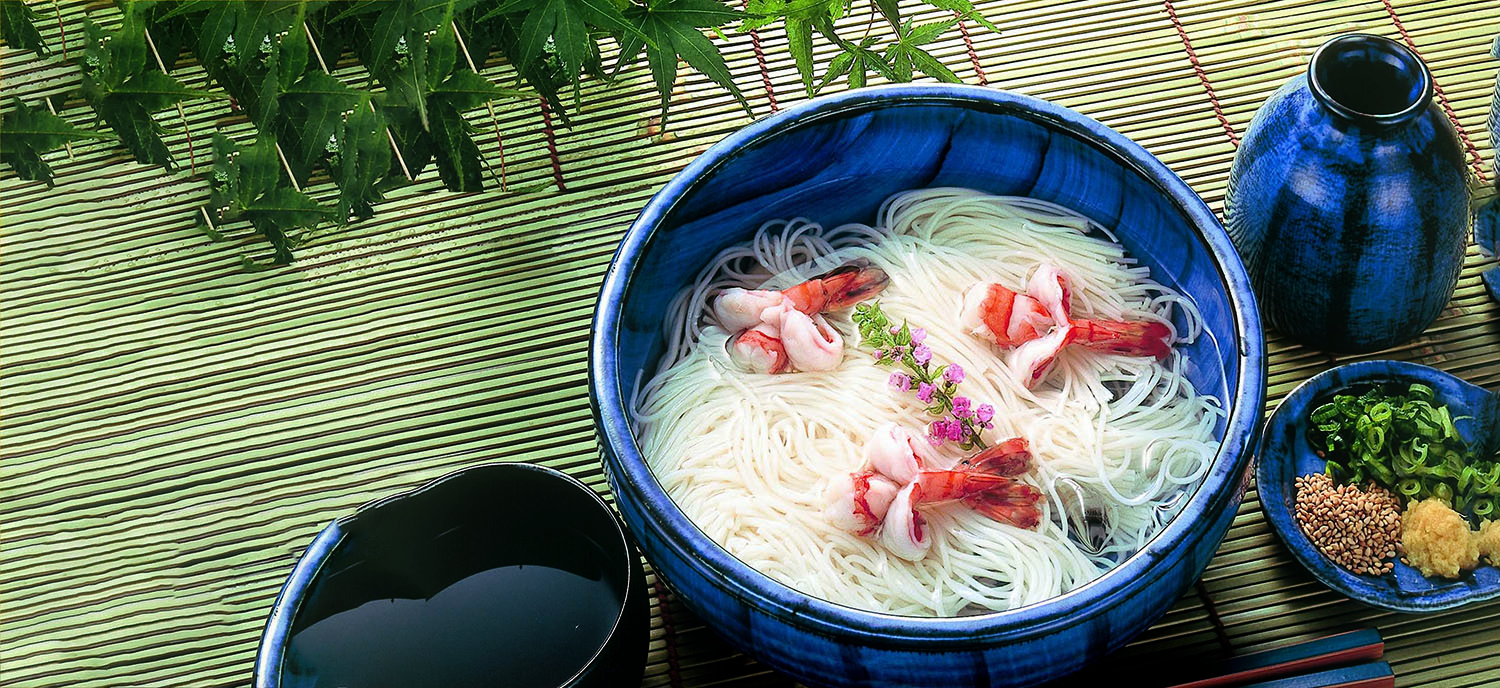Noodles
Japanese food as we know it would be very different if it didn’t include noodles. From Japanese udon and soba noodles to Japanese ramen, there are so many Japanese recipes containing noodles out there that it is impossible to get bored. With Japanese noodle dishes becoming more and more popular as time goes on, the desire to discover more about this traditional Japanese ingredient has only increased.
Ramen noodles made from wheat are much thinner and longer than udon and have a nice chewy bite when cooked. You’ll usually find them served in a tasty broth.
Udon is a chewy and soft thick noodle variety, usually pale white in colour with a neutral flavour making it an ideal choice for strongly flavoured dishes.
Soba noodles are made from buckwheat flour, or a mixture of buckwheat and wheat flour in equal measure. They are considered one of the trendiest and tastiest superfoods today.
Somen noodles are stretched thin wheat noodles, comparable to vermicelli that can be served both hot or cold and absorbs other flavours well.

Kanesu Seimei
Founded in 1907 in Hyogo Prefecture, Kanesu Seimei belongs to the Tenobe Somen Association and manufactures a large variety of noodles from soba to hiyamugi following the traditional process. However, it is Tenobe hand-stretched somen that Kanesu Seimen is the most famous for.
Branded Ibonoito and made from the finest-quality flour, crystal-clear water from the River Ibo in the Harima area, and salt from Ako, the delicate and fine Ibonoito Tenobe Somen noodles are painstakingly manufactured by the most skilled culinary artists.
With plenty of body and a soft, pleasant feel on the palate, Ibonoito Somen is manufactured using a traditional process which has been preserved by the regulations of the Association. Each individual batch is checked by qualified inspectors, graded according to quality, and then stored in one of the Association’s 24 dedicated warehouses for tight quality control.

